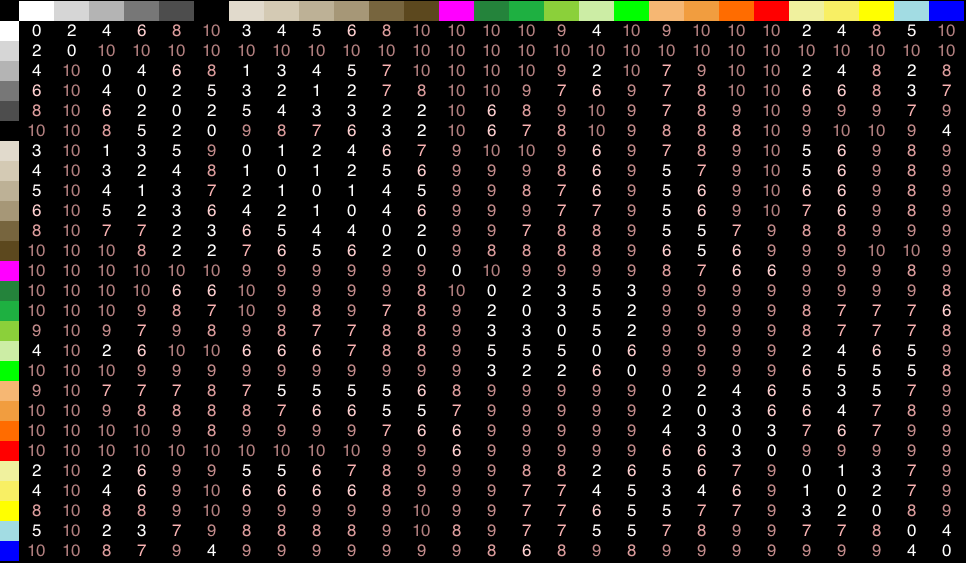I'm looking for an algorithm that compares two RGB colors and generates a value of their similarity (where similarity means "similar with respect to average human perception").
Any ideas?
EDIT:
Since I cannot answer anymore I decided to put my "solution" as an edit to the question.
I decided to go with a (very) small subset of true-color in my app, so that I can handle comparison of colors by my own. I work with about 30 colors and use hard-coded distances between them.
Since it was an iPhone app I worked with objective-C and the implementation is more or less a matrix representing the table below, which shows the distances between the colors.
